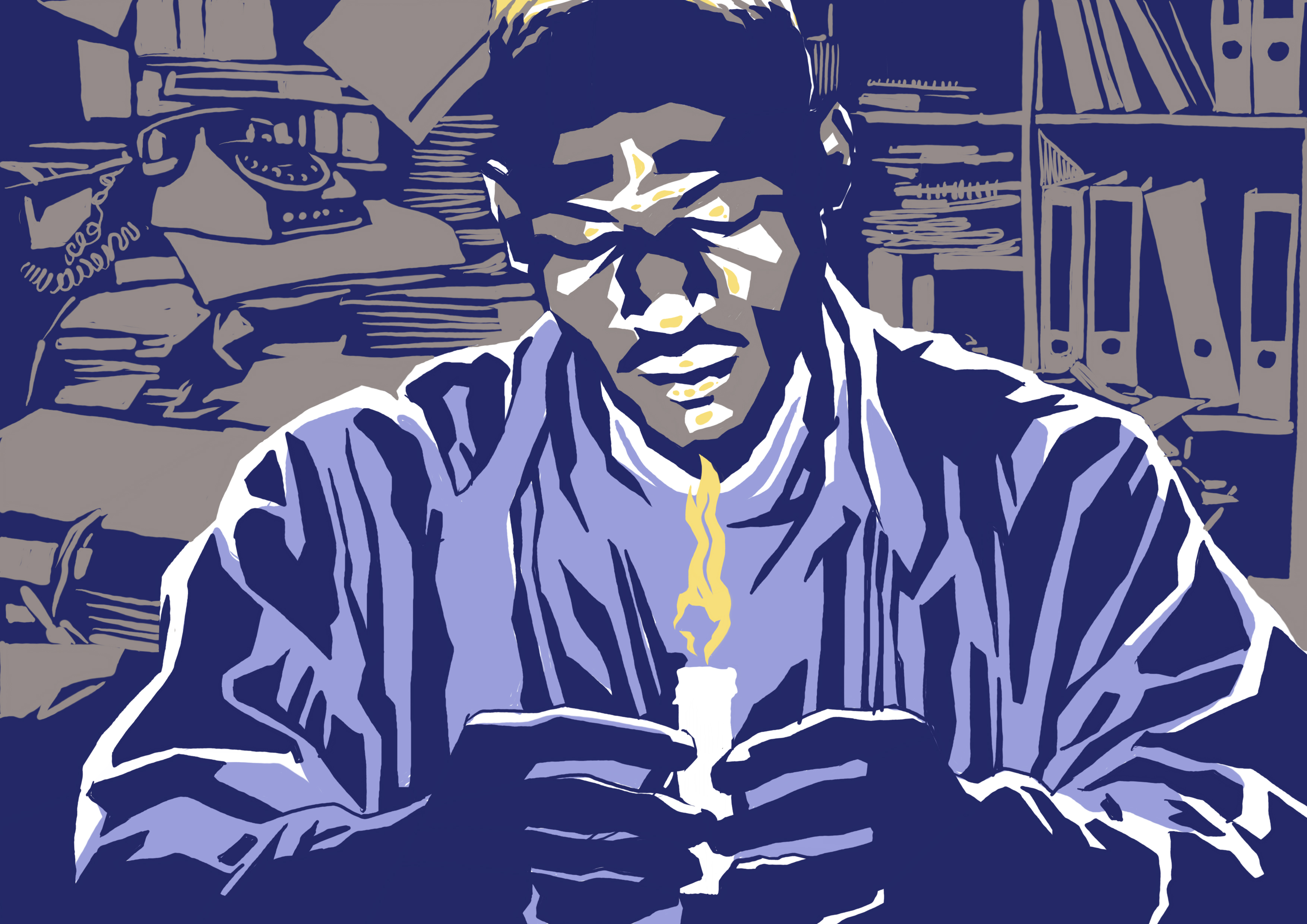The story of the fire brigade in Kenya’s eastern Tharaka Nithi county shows that it is perfectly possible to maintain a successful public service – and not only put out fires but also inspire hope in citizens – in a rural region classified by the World Bank as “very poor.” It also shows that competency, combined with political will, are enough to achieve success. The question that remains, however, is why other, equally poor counties in Kenya fail so dismally to do the same. And why is the governor who presided over this development so reluctant to talk?
A bungalow flanked by trees
The Tharaka Nithi County Fire and Rescue Department headquarters in Chuka, Tharaka Nithi county in Kenya is no more than a humble bungalow, flanked by trees. But the four shiny, red fire trucks in its yard give an inkling of the public service power that is located here. In a country where taxpayers’ money often doesn’t translate to visible state assistance to citizens, this Fire and Rescue Department is exceptional.
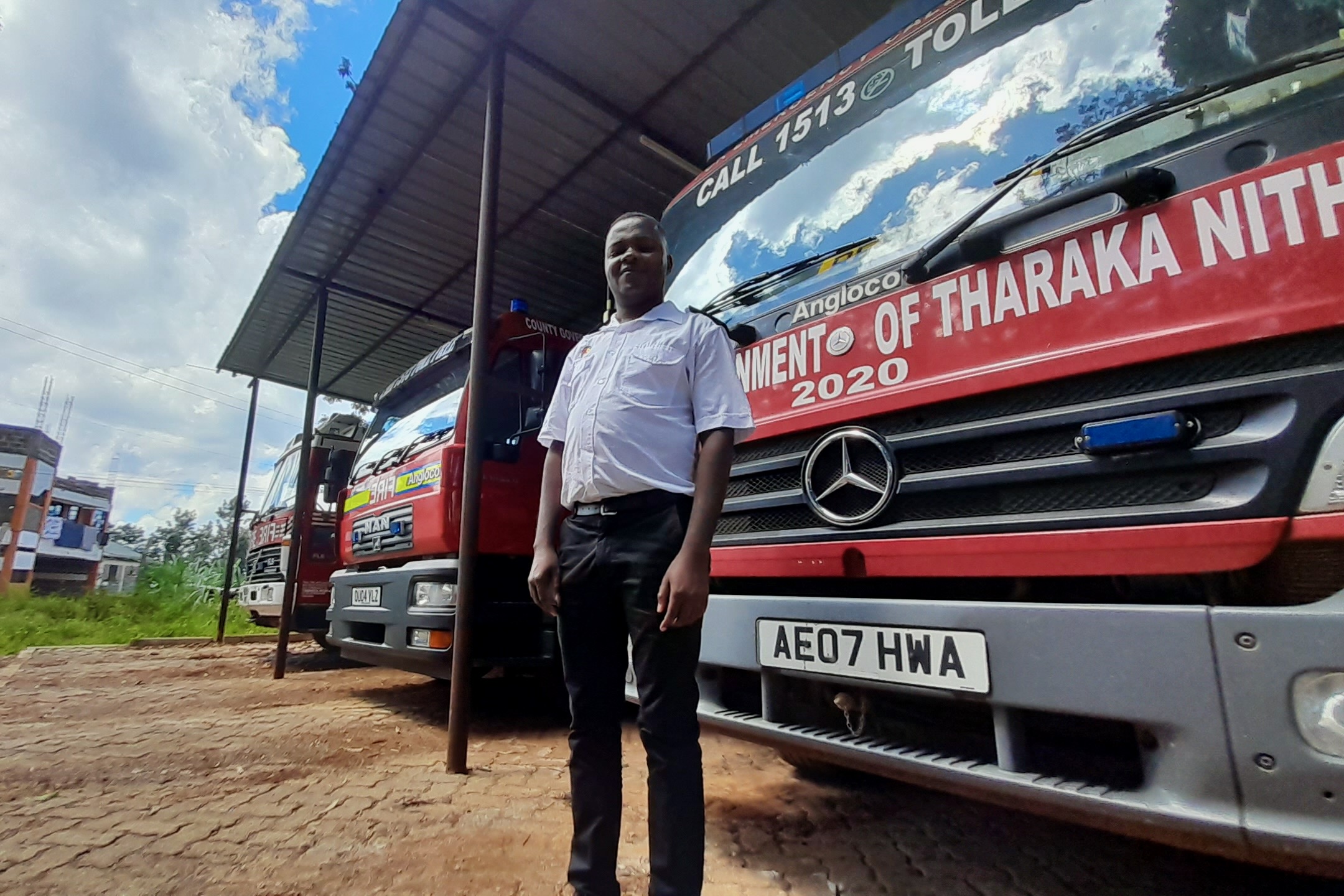
Before 2016, Chief Fire Officer Alex Mugambi (“But don’t call me that, we are an equal team”) was an ICT specialist at the Tharaka Nithi county government. When in that year a fire engine truck was donated to the county by the United Kingdom, and there was an opportunity for someone to establish and manage the new service, Mugambi volunteered; “Out of passion for saving lives and community engagement,” he says.
The ICT specialist became a firefighter
He started the task with only two colleagues who trained with him. “At the time, we did not yet get much help from the government. We were only three, with one used fire engine, and one would serve as the driver. But when the new governor, Muthomi Njuki, came in 2017, he lobbied for more resources and opportunities for us to go the UK to (further) train. He also increased our team, which stands now at 22.”
During his training in the UK, Mugambi observed that that country had a “multi-agency approach” of emergency services. “In Kenya, we have the police service and firefighters, but there is rarely an ambulance involved. I talked to the governor, and he agreed to implement (a merged system) here.” The county equipped the fire department with a new ambulance and facilitated training on paramedic services. “This was a crucial improvement. Previously, victims who had been extracted by us from a (crashed) vehicle could not be assisted medically, because the ambulance had not arrived. Injuries also resulted from well-meaning Samaritans carrying wounded individuals in their personal cars, or from being pulled out from crashed cars or burning houses the wrong way, which sometimes led to spinal lesions.”
Emergency numbers and home rescues
Mugambi has used his background in Information Technology by making the department’s communications more user-friendly, too. “I noticed many residents were not using the officially listed emergency contacts. I began posting that information on my Facebook page, and it worked. People were now phoning the right number. Next, I opened an official page for the department. We now post updates on rescue situations, and we also get alerts on emergency situations.” Mugambi has also created an app that Tharaka Nithi’s citizens can use to alert the emergency services; it also allows you to report power failures to the Kenya Power and Lighting company, and even, in case of disastrous situations, report to the Red Cross.
Mugambi and his team now also carry out home rescues, where they visit those who are bedridden in their homes and don’t have the money to take themselves to hospital for treatment. In conjunction with the Community Health Volunteers, a structure set up by governor Njuki, they use their ambulances to carry these patients to hospital, where they are treated courtesy of the county government. They also tend to street children who collapse on the streets due to dehydration, hunger, epilepsy, or other conditions.
The furniture is buffed and the floors are clean
Perhaps the most surprising element of this story is that features of the fire and rescue project are not only built, but also maintained, in a part of the world where new projects are aplenty, but often become dilapidated after a while. But the Fire Department bungalow, refurbished and upgraded after a Polish grant helped to top up local funding in 2019, is well-kept, with buffed furniture, tidy spaces, and clean floors. The same goes for the rescue trucks: “Our UK training taught us how to maintain equipment and the vehicles. Whenever there are minor problems like car battery issues, we solve them internally. For major services and repair, we have a county transport fleet management system.” Regarding water reserves for the fire trucks’ tanks, the county ensures access, while it has also established rescue stations in two other locations in the county.
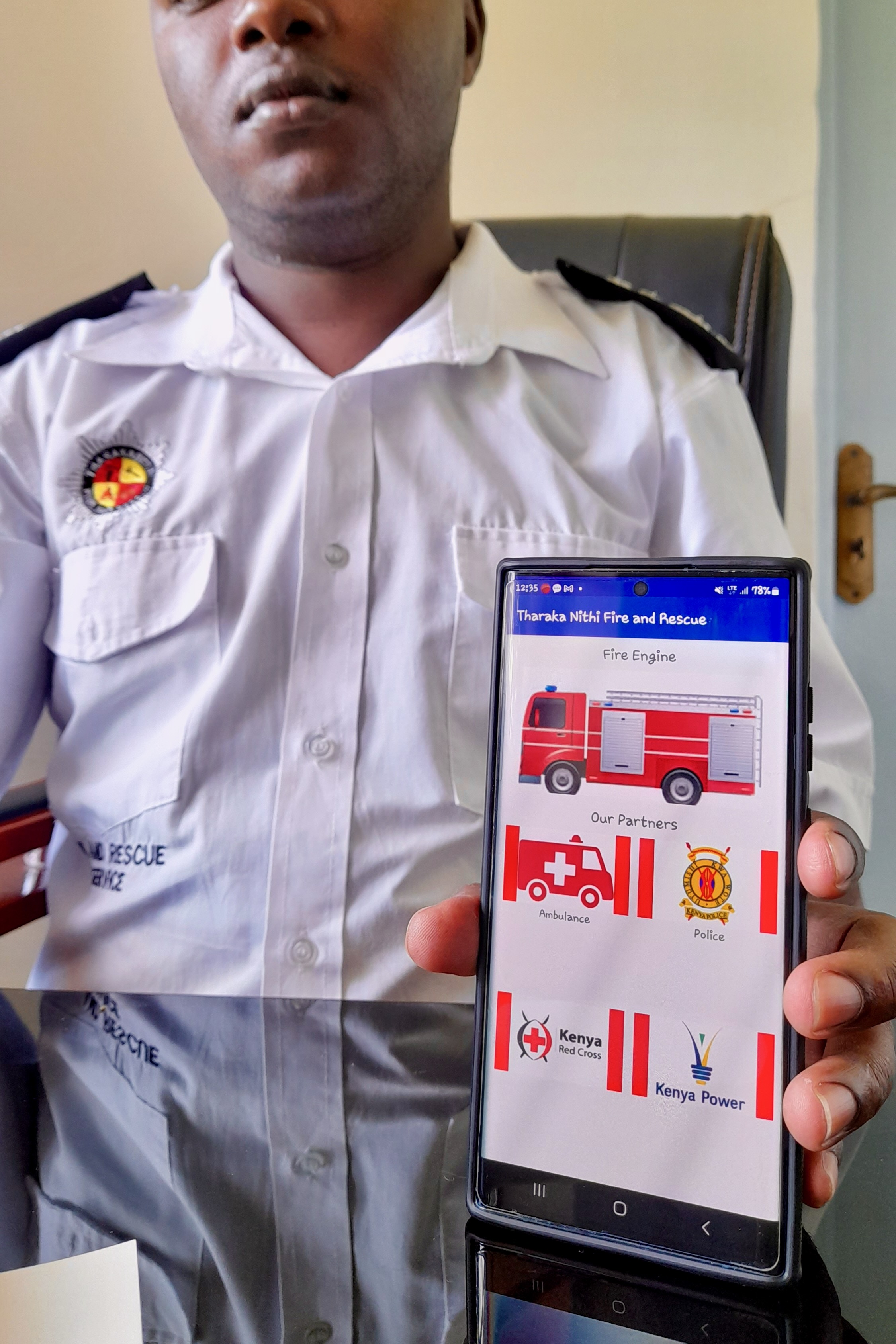
Good reviews
Motorcycle taxi driver Nick Gitonga is regularly confronted with the need for rescue services. “Many of my colleagues and I, too, have been involved in car accidents where the fire department assisted. In my case, they rushed me to the hospital, and I believe that is what saved me. Previously we would wait for a long time for an ambulance to pick us up, or we would be ferried to hospital in a good Samaritan’s car.” Catherine Kawira, a greengrocer, recalls a series of events where houses caught fire “and (the fire brigade) would rush to many of the scenes in good time.” Casual labourer Franklin Mwenda says he once witnessed the collapse of a building, whereby “the fire department rushed to the scene and rescued many victims.” Out of a total of ten locals interviewed, seven shared similar sentiments, while three said they had no opinion or experience on the matter.
Characters
The fire department also monitors public compliance with safety regulations, which is where resisting bribery comes in. “Some characters try to bribe their way, so that they can put up their petrol stations quickly. Same goes for construction projects, whereby we need to check that the new homes’ exits are clear.” But they cannot accept under-the-table payments, Mugambi says. “If I do, somebody could die in a fire.” He adds that the rest of the team are just as serious about this as he is. “We recruit people who share similar values. We cannot engage in nepotism or corruption.”
A baby in a pit latrine
Even though Tharaka Nithi’s rescue service is performing well, money is still often short. “We need developers to assist with a planned dispatch centre where all fire and emergency services can be accessed through one phone line, which includes GPS tracking for victims and suggestions for the best route and equipment needed,” says Mugambi. “And teams need trauma and counselling services, too.” He recalls a particularly nightmarish incident when a newborn baby needed to be rescued from a pit latrine. “We had to drill the concrete to expand it on the sides so we could drop somebody inside to swim through the pungent waste and pick the baby. We were successful, but that image of us retrieving the baby has never left my mind.” Diving training is among the requests for support his department has made from the national government, so far in vain.
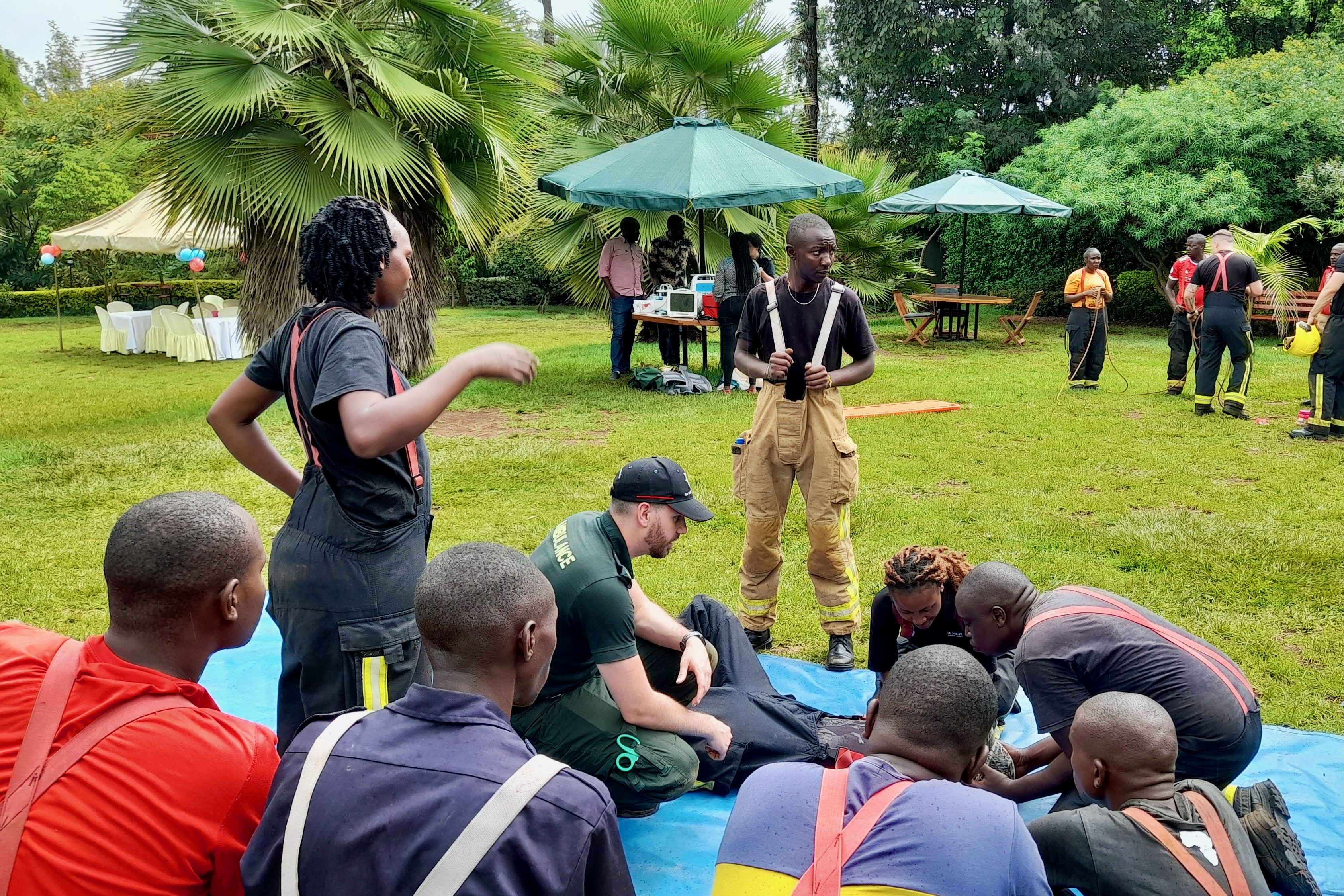
Pelted with stones
The Tharaka Nithi County Fire and Rescue Department is very different from fire departments in other Kenyan counties. Not only, ZAM hears when phoning around, are very few of the 47 counties’ rescue services coordinated with ambulances, which leads to firefighters often severely injuring victims at accident scenes, they often do not even have enough water to put out fires in the first place. A fire chief in another county, who speaks anonymously for fear of repercussions, reports that victims and bystanders at accident scenes often “pelt stones at us and insult us, accusing us of being late and not helping. But we have accessibility issues because of the congested nature of the town, and we also do not have the resources to carry full water reserves in our trucks. We want to help more but we are limited.” The fire chief adds that strategies to respond to a frustrated and angry public are now “one of the things I train my staff on, because it happens so frequently, and one must know how to react.”
Another firefighting professional, in yet another county, told ZAM that “in the district which I serve, the homes are built very close together, so when a fire starts, it spreads fast. We have already responded to five major fires in 2023, but most times the community is the one that puts out the fires. We have a broken pump which has never been repaired by the county government.” He adds that his team also does not have any fireproof clothing to wear and that “we just wear cotton shirts.”
The broken pump was never repaired
Residents from West Pokot in the Rift Valley region even threatened to sue the county government for negligence after a blaze in a town named Makutano in July 2022 razed down several shops and businesses, without any fire truck ever arriving at the scene. MP Elijah Kasheusheu, who represents the ward area in question, later explained that the single county fire truck had been involved in an accident and was being repaired in another county at the time. While the citizens’ threats to sue were not followed through, ZAM could not find out if the situation has improved since then. The communications department at the West Pokot County government did not respond to questions.
Alex Mugambi has heard all these stories, and more. “I have seen fire engines going to fight fire without water. Most counties do not have fire hydrants or enough vehicles. So, when one fire engine will go out and use water, in 20 minutes it is empty, and they must go back and fetch some more. Some of them are then stoned or even killed by angry mobs, who suspect them of laxity, but it is not their fault.”
The Council of Governors only responds to formal complaints
When ZAM presented the above complaints to the Council of Governors, the platform where Kenya’s 47 counties’ leaders meet, and whose function is to promote and share best practices in counties, we were told by a spokesperson that it was “not able to issue a response at the moment” because it needed “to receive the complaints formally.” The spokesperson added that ZAM “should seek a voice from the governors of the counties where complaints have arisen, because county governments are autonomous.” However, formulating complaints formally would require revealing the identity of the rescue personnel ZAM spoke to, who all fear repercussions if this were to happen.
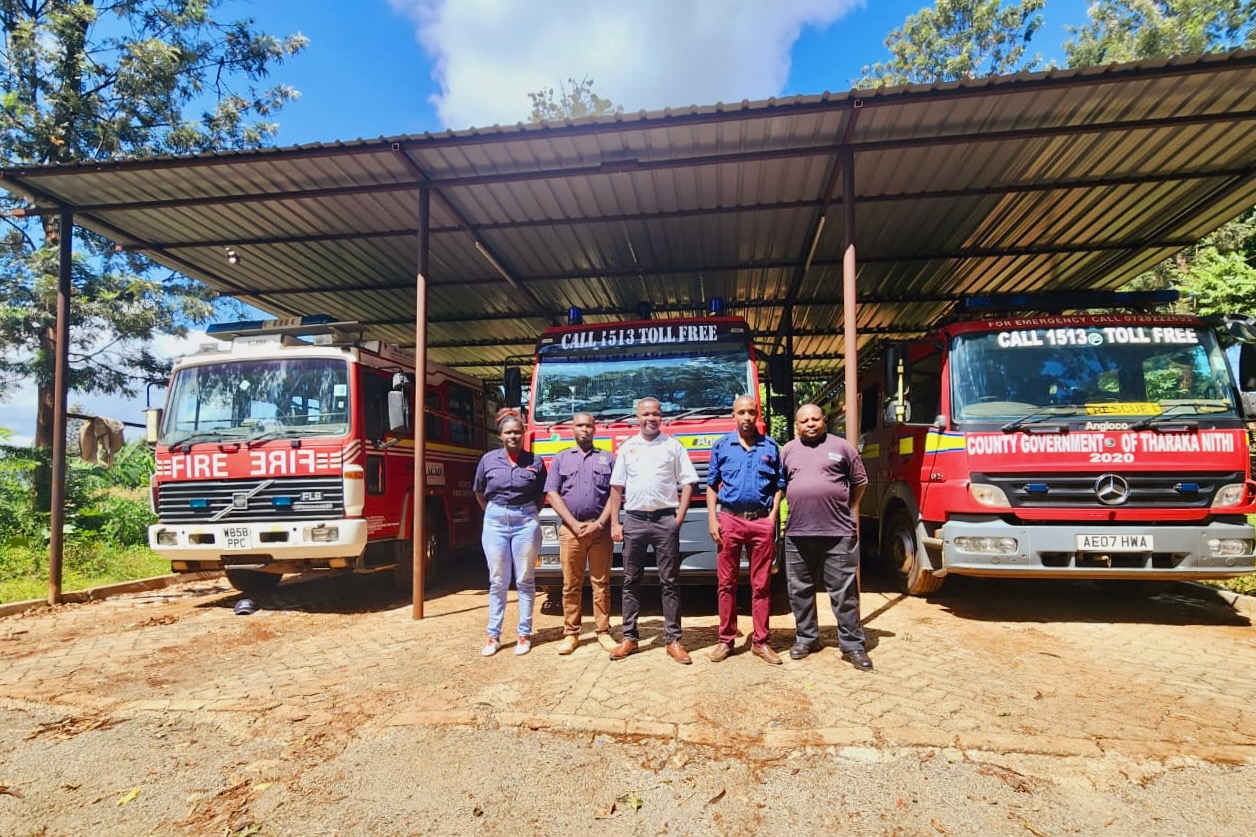
Unkept promises
One of the firefighters quoted above did tell ZAM that he had already “spoken to representatives from the county government” and that they had “promised to supply us with clothing and fix our equipment,” but that this had not happened. He added that during a recent mission, he had to ask a community member for a water pump. “Luckily one was found.” The firefighter says he feels that the Council of Governors “ought to do more to ensure that the safety of firefighters is ensured and that equipment breaking down should cease happening. Some governors are not even aware that the fire department is under their responsibility.”
The governor stays mum
One would think that the shining example of the rescue brigade would cause Tharaka Nithi’s governor, Muthomi Njuki, to brag just a little. But one would be wrong. The governor’s responses to ZAM’s questions are limited, to say the least. Yes, “regular trainings and updated equipment (for the fire department) are very important to me” because these will make Tharaka Nithi “a safer county for the community,” is all he says on the matter. He won’t comment on how his county is very different from, say, West Pokot, because he “cannot speak for other counties because they are run by their own different leadership.” On questions relating to good governance, accountable expenditure, and competency of staff, where Tharaka Nithi also appears to perform moderately well (Governor Njuki once sacked 130 unqualified village administrators to bring down the county’s bloated wage bill), he doesn’t respond at all.
Is he worried about upsetting any fellow governors, many of whom he shares a ruling party allegiance with? Or that too much of a spotlight might revive old corruption accusations, once brought against him by political rivals, but later dropped? (All he says on this is that he is “happy that the people of Tharaka Nithi did not listen to the naysayers, they listened to the voice of reason, to the heart, and to God.”) Or does he stay mum because of current local disputes, where he has accused certain politicians of planning fruitless and wasteful expenditure in a project for new county headquarters?
Amid the speculation, one thing is for sure: it can’t be easy being a governor in the cauldron of Kenya’s establishment party politics.
Alex Mugambi, for his part, feels that Kenya’s national government should take more responsibility. “It should monitor the needs for ambulances and fire engines in different parts of the country and increase the number of trained staff where needed, including diving.” It should also do much more to support rescue personnel, whose salaries and working conditions are regulated at this level. “We are not paid risk allowances despite how dangerous our work is.” He adds that he and colleagues have formed a Chief Fire Officer’s Association, and drafted a scheme of service which has been presented to relevant government commissions, but that they so far have not received responses.
Read all the investigative articles in this series:
Public Servants | Kenya, Uganda, Nigeria, Ghana, Malawi
Malawi | A Reduction In Deaths

